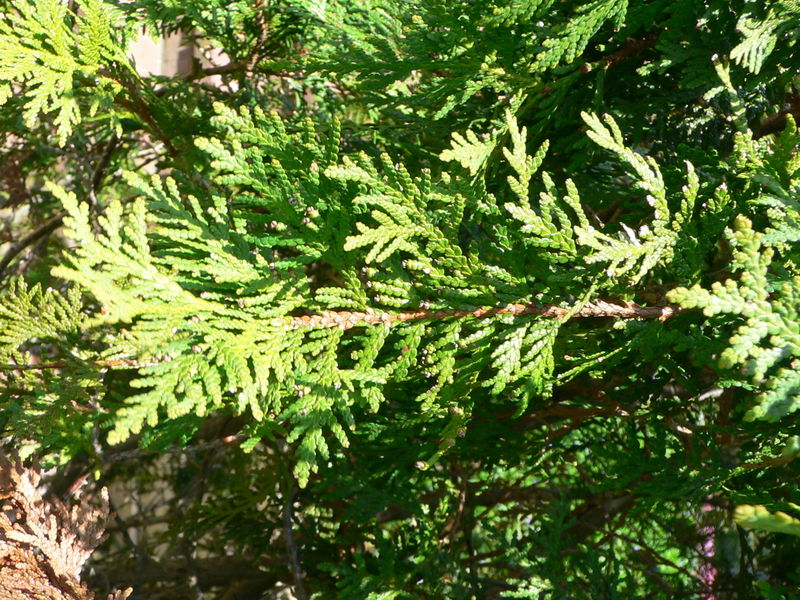Now you Cedar, Now you Don’t
May 12th, 2010I have a peeve, and thy name is Cedar. Or is it?
People are confused, I was confused, confusion abounds, what is a cedar? What isn’t? I’ve even seen articles, writing by some sweatshop overseas writing shops I’m sure, that are completely mishmashed confusing true cedars with fake ones. That is the quality you get I guess when you pay by the word at one of these generic article spam sites, and don’t give any bonuses for accuracy.

A Thuja, not a Cedar

A True Cedar
Anyways, what I mean to say, is that what you think is a cedar, probably isn’t. If it is native to North America, it isn’t a cedar, if it is growing in zone 5 or colder, it probably isn’t a cedar (though, there are a few exceptions).
True cedars have the genus cedrus and are native to North Africa, the Middle East, and regions around the Himalayas. If it isn’t a cedrus it isn’t a cedar.
Eastern Red Cedar
Eastern Red Cedar, the most common non-cedar cedar. Is what most people in North America think of when we think of the word cedar. This tree is native to most of the eastern US and Canada. It is evergreen, has blue berries (not cones) and scaly green leaves, not needles. The scientific name of Eastern Red Cedar is Juniperus virginiana for you see, it is a juniper, not a cedar.
However, if you want to be really confused. This is the tree that gives us the smelly and rot resistant “cedar” wood we all know and love, but again, it isn’t an actual cedar.
Western Red Cedar
Western Red Cedar also produces aromatic and rot resistant wood. It grows larger typically than the Eastern Red Cedar. It is a conifer, producing little cones as opposed to the berries found on the Easter Red Cedar. The scientific name of Western Red Cedar is Thuja plicata for you see, it is a thuja, not a cedar.
Western Red Cedar can also sometimes be called Arborvitae, which at least, is accurate if generic.
Northern White Cedar
Northern White Cedar is a tree which is again native to the Eastern parts of North America, it has cones, often starting yellowish before maturing, and scaly leaves again. It is, of course, not a cedar, but another thuja, Thuja occidentalis specifically. It is also often called Arborvitae. The lumber of Northern White Cedar is often used for log cabins and the like. It also has very many cultivars and is widely planted in landscapes.
So what is a cedar?
A cedar has to be in the genus Cedrus there are only a few types, worldwide: Cedrus atlantica or Atlas Cedar; Cedrus libani or Lebanon Cedar; Cedrus deodara or Himalayan Cedar. Others just aren’t true cedars. Additionally, most non-cedar cedars are the type of evergreen with scaly leaves, not needles. Cedars have needles. So an easy way to remember if it is a real cedar or just pretending, is if it has needles or not.
True cedars are very unique looking plants and make excellent specimens if they can grow where you live. They generally need mild winters (most can’t live in zone 5 or colder, there are a handful of exceptions) and shelter from drying winter sun. They certainly look nothing like the false ones most people think of.

May 13th, 2010 at 12:56 pm
Great post! I think I’ve learned a lot about cedar for sure.